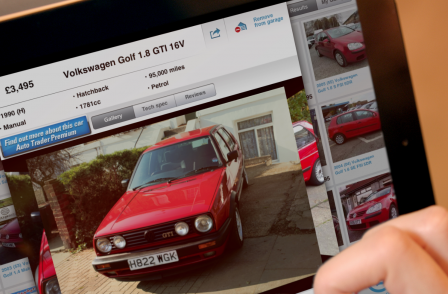
At the height of its powers, Auto Trader magazine had a circulation of almost 400,000 and was sold in 15,000 shops across the country. In the 1980s it was one of the UK’s top five selling magazines.
Skip forward a few decades to last week and this once mighty beast of the magazine jungle announced that it was to shut down its print operation and move online only.
As it feels like every week brings news of another print closure, Auto Trader’s decision surely just reflects the times – unhappy times for journalists still clinging to the last vestiges of the print era. But, the reality is that the car buyer’s bible’s move to digital could in fact provide a blueprint for other titles to follow.
Auto Trader’s digital switch comes not as a desperate attempt to salvage the title but from a position of strength. Last year’s accounts show that year-on-year turnover and profit were both up. Turnover rose 1 per cent to £257.2m and the EBITDA profit figure was up 10 per cent to £142.9m.
Jonathan Williams, group marketing director for Auto Trader, confirms that the decision was anything but a knee-jerk one.
“For the last eight years there has been a gradual turnaround,” he tells Press Gazette. “It’s not been because of us pushing the [digital] agenda but because of motorists looking online and retailers pushing advertising into the digital space.”
Williams says Auto Trader also benefited from being “an early adopter” of both mobile and desktop technology. But it isn’t as simple as dumping the print publication onto a website; rather, the way the magazine is used both by advertisers and readers has changed.
According to publisher Trader Media Group, print circulation was down to 27,000 in March. Meanwhile, it now claims to attract 11.5m unique users a month to its website and an extra 3.5m on its mobile site. It has found out that around half of all its mobile access is from car dealers’ forecourts.
“It’s quite a telling tale of the growth in how mobile is playing an important part in terms of readers’ relationship to dealers,” explains Williams.
With mobile usage rising by 60 per cent and desktop growing by a relatively modest 10 per cent, Williams admits that the magazine would think about “going mobile first” if it were starting from scratch.
If the relationship between the magazine and its readers has changed, then its relationship with advertisers and dealerships has transformed beyond recognition. While mainstream print media has struggled to convince advertisers that there is value in their digital products, Auto Trader thinks it can actively demonstrate that value.
“Dealers can have a better understanding of how they should use their inventory,” Williams says. “Now, a large part of what we do is providing business solutions to dealers and manufacturers. It allows them to see what the future portfolio of their stock should look like.”
The basic idea is that advertisers can see precisely what their customers are interested in and adapt accordingly. According to Williams, the worth of that information exceeds anything that old media could provide.
“There’s been a gradual process of communicating that to advertisers,” he adds. “We hope they see that value.”
In addition to traditional advertising, Auto Trader also now offers a whole range of services to dealers. It has built websites for around 5,000 dealerships and has branched out to provide SEO advice as well.
“When we had the magazine we were just a straight classified advertising medium,” Williams says. “We realised early that that business could be quite susceptible. In hard times, the marketing budget is one of the first things that can be looked at.”
The end of the print era at Auto Trader is far from good news for everyone however. Up to 150 jobs could be lost on the production and editorial side of the business with the closure of the magazine, although the final number has yet to be determined. On the other side of the equation, Auto Trader still employs around 1,200 people, including ten journalists to write reviews and features.
“There were always going to be redundancies as a result of the closure of the magazine,” Williams admits.
“But we are making the change to better safeguard the future of other people’s roles.”
“As circulation has declined that business has been marginalised and a lot of those people have gravitated towards the digital side of the business. We have also been recruiting significantly more staff to that business.”
He also acknowledges that there are readers who will take time to adapt to the disappearance of such a well-loved title.
“It comes down to nostalgia,” says Williams. “The magazine has helped put many people in their first car. That’s where the love of Auto Trader in a slightly older generation comes from. Younger people are more interested in practicalities and less in that emotional element.
“Whenever you tell anyone you are taking something away , the immediate reaction is ‘oh my goodness, that’s not good’ but when you delve deeper they say: ‘I don’t actually use that.’”
Williams might accept that there will be teething problems convincing all readers moving online is for the best, but he’s in no doubt that the change was necessary.
“It was a monumental decision after 36 years, but it’s the right decision.”
Email pged@pressgazette.co.uk to point out mistakes, provide story tips or send in a letter for publication on our "Letters Page" blog
